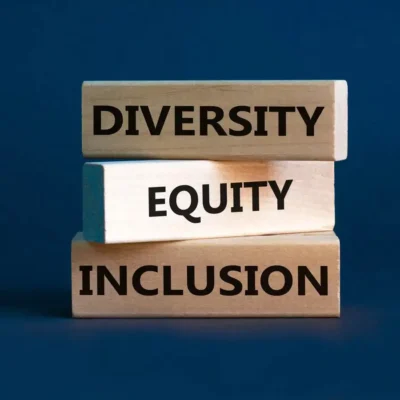Big Tech stocks are once again in the spotlight. Giants like Nvidia, Microsoft, Amazon, and Alphabet have seen their valuations rise sharply in recent months. Much of this growth is being credited to advancements in artificial intelligence (AI), and the race to dominate the space. But some experts are starting to worry. Is this a true technological revolution—or are we witnessing the early signs of an AI bubble?
A closer look reveals that billions are being funneled into AI research and development (R&D). What’s more, generous government R&D tax breaks are making these investments more aggressive than ever. This combination of high hopes and financial incentives has many economists and analysts sounding the alarm.
What’s Behind the Surge in Big Tech Valuations?
The rise in Big Tech’s market value is driven mainly by the explosive demand for AI technologies. From ChatGPT to image generators, AI tools are being used in everything from writing code to creating music and analyzing data. Businesses and consumers alike are adopting these tools rapidly.
Here are some key reasons for the recent surge in Big Tech valuations:
- AI integration across industries: AI is no longer a niche tool—it’s being adopted in healthcare, finance, marketing, and logistics.
- Cloud infrastructure demand: As AI models grow, so does the need for powerful cloud infrastructure, benefitting companies like Microsoft and Amazon Web Services.
- Investor excitement: With every new AI announcement, investors flood in, eager not to miss the next big thing.
- Favorable tax policies: Governments around the world are offering R&D tax incentives to push AI growth, leading to a major boost in funding and experimentation.
Together, these factors have driven stock prices and company valuations to new heights. Nvidia, for example, briefly became the world’s most valuable company in 2024, thanks to its dominance in AI chips.
The Role of R&D Tax Breaks in AI Spending
A less talked-about—but very important—factor in this AI boom is tax policy.
Governments Fueling Innovation
To stay competitive in the AI race, many countries have introduced R&D tax credits. These incentives allow companies to deduct part of their R&D spending from their taxes. In some regions, governments even offer direct cash refunds for early-stage startups that are not yet profitable.
This makes heavy R&D spending less risky—and more appealing.
Why It Matters
When companies receive significant tax relief for investing in AI, it can:
- Encourage faster innovation.
- Reduce the financial risk of building expensive models.
- Lead to aggressive scaling and hiring.
- Make stock valuations grow faster than usual.
However, when paired with market hype, these policies may also create the perfect conditions for an AI bubble.
What Is an AI Bubble?

A financial bubble occurs when the price of an asset (or group of assets) rises far above its actual value, usually driven by excitement and speculation rather than fundamentals.
An AI bubble would mean:
- Tech company valuations keep rising based on future expectations of AI success.
- Investors throw money into AI projects with no clear business models.
- Companies exaggerate their AI capabilities to attract funding.
- A sudden loss of faith could cause valuations to crash—like the dot-com bubble of the early 2000s.
Warning Signs Are Starting to Appear
1. Unrealistic Valuations
Some AI startups are reaching billion-dollar valuations before they’ve even launched a real product. This is similar to what happened during the crypto boom and the dot-com era.
2. Overhyped Announcements
Companies often issue vague press releases claiming “AI transformation” or “next-gen models,” yet provide little detail. These buzzwords can lead to stock price bumps with no real substance behind them.
3. Increased Venture Capital Risk
Venture capitalists are pouring billions into AI startups, sometimes ignoring traditional metrics like revenue or customer retention. Many of these startups may fail to produce lasting value.
4. Dependence on Tax Incentives
Much of the current R&D push is being supported by tax breaks. If governments roll back these policies—or if the public questions their usefulness—funding could dry up quickly.
Lessons from the Dot-Com Bubble
Back in the late 1990s, internet companies exploded in value because of the promise of a connected future. Sound familiar?
Startups with “.com” in their names received massive funding, even if they had no path to profit. Eventually, when investors realized many of these companies weren’t viable, the market crashed—hard.
Similarities to Today’s AI Boom:
- Huge valuations based on future promises.
- Aggressive spending without revenue.
- Investor fear of missing out (FOMO).
- Media hype around every announcement.
While AI has far more proven use cases than early internet startups did, the excessive optimism and risky behavior are eerily similar.
Could This Be Justified?
Not everyone believes we’re in a bubble. Supporters of AI argue that:
- AI is a general-purpose technology, like electricity or the internet.
- Companies investing heavily now will dominate the future.
- The technology has already shown real-world impact in productivity, healthcare, and education.
Long-Term Value vs. Short-Term Hype
The real debate isn’t whether AI is useful—it clearly is. The question is whether current valuations and spending levels are sustainable or over-inflated.

What Should Investors Watch?
If you’re watching this space—or investing in it—here are some things to keep in mind:
1. Actual Revenue from AI Products
Is the company making real money from AI, or just spending on R&D?
2. Balanced Investment Strategies
Are companies relying only on tax incentives, or do they have a sound long-term plan?
3. Transparency in Results
Are AI claims backed up by clear metrics, case studies, or customer stories?
4. Government Policy Changes
Keep an eye on any changes in R&D tax break policies. These could impact the financial health of many AI-heavy companies.
Could a Correction Be Healthy?
Interestingly, some experts believe a mild correction in the market could be helpful.
It could:
- Weed out weak AI startups.
- Bring more realistic valuations.
- Encourage smarter investments focused on outcomes, not hype.
This happened with the dot-com crash—many companies failed, but Amazon and Google survived and later thrived. The same could happen in AI: a few strong players will dominate after the dust settles.
Conclusion: Is the AI Bubble Real?
The AI bubble and Big Tech valuations debate will likely continue for the foreseeable future. There’s no doubt that AI is transforming industries. But there’s also real concern that overvaluation, overreliance on tax breaks, and hype-driven spending are inflating a risky bubble.
History shows that bubbles often start with a promising new technology—but end in financial chaos when expectations get too high.
Whether this boom leads to lasting progress or a painful correction depends on how companies, investors, and policymakers handle the coming years. One thing is clear: we’re in uncharted territory, and caution is just as important as excitement.
Read Next – Risk of Stagflation Rising Due to Tariffs and Wage Pressures






